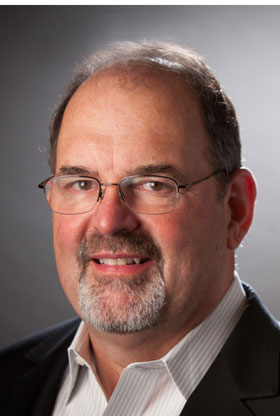Who Is Federal CIO Tony Scott?
Tony Scott may be a newcomer to government, but he’s no stranger to running IT like a business and improving the workplace experience through technology.
In his new role as CIO, Scott inherits an IT agenda focused on recruiting top IT talent, improving digital services and vigilantly securing the government’s electronic assets from hackers.
“This means in some ways I would play the same role I was playing at VMware, but at the national level,” Scott said in a Feb. 6 farewell blog post a day after being named federal CIO. While still at VMware, Scott began working part time on a “federal task force to shape government policy around the role of technology in economic growth and driving the creation of jobs, as well as expanding opportunities for veterans and women.”
“My new role will allow me to focus full time on improving IT for our citizens,” Scott said.
Cybersecurity, net neutrality, e-health and access to high speed Internet are among the issues Scott will have a hand in advancing. The White House will provide more specifics about Scott’s role in the weeks ahead.

Scott joins a growing team of new recruits that the Obama administration is bringing in to improve management and delivery of its $84 billion IT portfolio. Megan Smith, a former Google executive turned federal chief technology officer, and Mikey Dickerson, a former Google engineer who now serves as administrator of U.S. Digital Service within the Office of Management and Budget (OMB), are also part of that group. Dickerson’s team includes the third engineer hired at Amazon and the former operations director at Twitter.
As federal CIO, Scott would also hold the title of administrator of OMB’s Office of Electronic Government and Information Technology. He brings more than three decades of IT experience to the job, and his previous roles include CIO at Microsoft and The Walt Disney Co. and chief technology officer of information systems and services at General Motors Corp.
Scott left Microsoft in 2013, on his own terms.
“My dad passed away at Easter time, so taking a little time to get my mother re-settled, get my instrument rating done (I’m a pilot), and work on a couple of other long delayed personal projects,” Scott told GeekWire in a June 2013 email. “Will go back to ‘work’ (in some form) in a few months, but right now just focusing on the above.”
FITARA Implementation
In his new role, Scott will have a hand in creating implementation guidance for the Federal Information Technology Acquisition Reform Act (FITARA). FITARA gives CIOs explicit authority to plan and approve IT spending and responsibility for reviewing and approving department IT contracts and appointments of any bureau-level CIOs.
“While passing FITARA was an important step, proper implementation is key to its success,” Sen. Tom Carper said in a statement. “It appears that Mr. Scott is up to that task. I look forward to working with him during FITARA’s implementation and learning more about his plan to develop and manage information technology across our federal government.”
Lisa Schlosser, who had been serving as acting federal CIO, told reporters last week that agencies will receive FITARA implementation guidance in the third quarter of this year, following the administration’s outreach phase.
"FITARA has codified a lot of the different initiatives that we’ve launched over the past several years," Schlosser said. "We’ve already started the process of reaching out to various stakeholders to get the specific feedback on their understanding of FITARA, that's both within the government as well as with external entities."
Running IT Like a Business
At VMware, Scott led efforts to shift the company’s internal IT organization to an as-a-service model. He worked to bring services closer to the customer, facilitate collaboration among VMware teams and improve the IT user experience for employees.
“What’s interesting about that is ... we are starting to think about our employee experience from a productivity and usability standpoint,” Scott told CIO Magazine Australia in January.
“For example, what happens when you go into a conference room or what is your cross-campus wireless experience or identity access management experience in the various places where VMware does business?” he said.
Federal employees are no different. Empowering employees to do their jobs is key to delivering better citizen services, and it appears Scott would agree.
He also understands that a good business must know its IT costs. Scott spoke with CIO Magazine about a VMware tool used to track IT costs and service levels at a granular level. He called it an ERP for IT.
“This is the tooling that will allow a CIO to work in an ‘IT-as-a-service’ model, run IT like a business and have the kind of conversation that we have always wanted to have, saying ‘here’s what our IT costs are by critical element and here are the levers that both IT and business can use to drive those costs and more importantly, drive capability,” he said.
Agencies have struggled to track this data, but the administration has vowed to be more transparent. President Obama’s fiscal 2016 budget proposal noted that technology-reform savings and performance metrics would be available to the public and on the IT Dashboard, starting this year.









